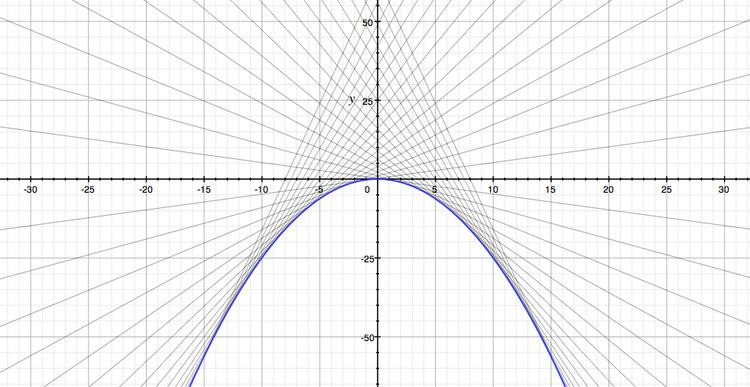 | ||
In mathematics, more specifically in mathematical analysis, Clairaut's equation (or Clairaut equation) is a differential equation of the form
Contents
where f is continuously differentiable. It is a particular case of the Lagrange differential equation.
This equation is named after the French mathematician Alexis Clairaut, who introduced it in 1734.
Definition
To solve Clairaut's equation, we differentiate with respect to x, yielding
so
Hence, either
or
In the former case, C = dy/dx for some constant C. Substituting this into the Clairaut's equation, we have the family of straight line functions given by
the so-called general solution of Clairaut's equation.
The latter case,
defines only one solution y(x), the so-called singular solution, whose graph is the envelope of the graphs of the general solutions. The singular solution is usually represented using parametric notation, as (x(p), y(p)), where p = dy/dx.
Examples
The following curves represent the solutions to two Clairaut's equations:
In each case, the general solutions are depicted in black while the singular solution is in violet.
Extension
By extension, a first-order partial differential equation of the form
is also known as Clairaut's equation.
